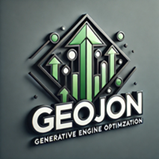
Key Takeaways
- Entity-based SEO focuses on creating meaningful connections and context, going beyond keywords to improve AI search visibility.
- Adapting for voice and conversational search ensures alignment with user behavior in AI-powered platforms.
- Leveraging AI tools enables smarter, faster optimization for search algorithms that prioritize semantic understanding.
- Building topical authority positions your brand as a trusted, credible resource for your niche.
- Optimizing for multimodal content caters to the expanding capabilities of AI search engines, including image, text, and video queries.
- Tracking AI-specific metrics and making data-driven refinements are critical for sustained visibility and success.
Estimated Time to Read: 20 minutes
From Keywords to Entities
The digital search landscape is changing rapidly. Once ruled by a focus on keyword matching, the advent of AI-powered search engines like ChatGPT and SearchGPT, Bing AI, Perplexity, and Claude has shifted the paradigm toward entity-based optimization. Unlike keywords, entities represent concepts, objects, or relationships that AI algorithms use to understand context and deliver relevant results.
This shift is about more than just ranking higher; it’s about getting your brand recognized as an authoritative source by the AI algorithms themselves. This Generative Search Engine guide explores how to make that happen, providing a comprehensive roadmap to prepare your SEO strategy for the next generation of search.
What Are Entities, and Why Are They Key to AI Search?
Entities are defined as recognizable concepts such as people, places, events, or objects that have a distinct identity. Unlike keywords, entities provide semantic depth and enable AI systems to understand the relationships between different concepts.
Example:
Consider the keyword “Tesla.” Without entities, the search engine would struggle to distinguish whether a user is looking for information about Nikola Tesla, Tesla Motors, or Tesla stock. AI systems rely on entity recognition to clarify user intent and deliver the right results.
Why Entities Matter in SEO
AI-powered search engines prioritize context, meaning they look for information that aligns with a user’s specific intent. By optimizing for entities:
- Your content becomes more contextually relevant to specific queries.
- AI can better associate your brand with related concepts, leading to higher visibility.
- You align with the semantic web, where relationships between entities drive search engine decisions.
Recent studies reveal that content optimized for entities has a 25–40% higher likelihood of being sourced by AI-driven platforms compared to keyword-focused content.
How to Transition from Keywords to Entities
Moving from keywords to entities requires a comprehensive shift in how you structure, write, and present your content. Here’s how to make that transition effectively:
Define and Reinforce Your Key Entities
To begin, you need to clearly establish the core entities your brand is associated with. These might include:
- Your company name.
- Your key products or services.
- Industry-specific terms or proprietary methodologies.
Use these entities consistently across your site and ensure they are contextually linked to other relevant entities. For example, a company in renewable energy might associate its brand with terms like “sustainability,” “solar power,” and “clean energy.”
Leverage Schema Markup
Schema markup provides structured data that helps AI understand your content’s context. For instance:
- Use Organization Schema to clarify your business identity.
- Add FAQ Schema to make your content easier for AI to source for conversational queries.
- Implement Product Schema to ensure detailed product attributes are easily accessible.
Connect Entities with Meaningful Content
It’s not enough to list entities; you must demonstrate their relevance by creating comprehensive content that explores relationships between them. For example:
- Write in-depth articles linking your entity to others in your industry.
- Use case studies and examples to illustrate connections.
- Provide data-driven insights that reinforce your expertise.
Optimizing for Voice and Conversational Search

Voice search is no longer a futuristic concept—it’s a reality shaping how users interact with search engines. With devices like Alexa, Google Assistant, and Siri, conversational AI queries are driving new expectations for SEO.
What Makes Voice Search Different?
Voice queries tend to be:
- Longer and Conversational: Users often ask complete questions instead of using fragmented keywords.
- Intent-Driven: Queries often reflect immediate needs, such as “What’s the nearest open coffee shop?”
Adapting Your Content for Voice Search
To optimize for this behavior:
- Use Natural Language: Structure your content to mimic how people speak, not just how they type.
- Answer Questions Directly: Include FAQ sections that anticipate user questions.
- Optimize for Local Search: Incorporate location-specific information, especially if you serve regional markets.
A report by BrightLocal shows that 76% of smart speaker users perform local voice searches weekly, making location optimization critical for businesses.
Building Topical Authority
Topical authority signals to search engines that your website is a trusted resource for specific subjects. AI algorithms, in particular, prioritize content from authoritative sources when sourcing answers.
How to Build Topical Authority
- Develop Content Clusters: Create comprehensive content hubs that cover a topic from multiple angles. For example, if your niche is “digital marketing,” your hub might include sections on SEO, PPC, social media, and email marketing.
- Publish Regularly: Establish a consistent publishing schedule to demonstrate expertise and relevance.
- Collaborate with Thought Leaders: Co-author articles or host podcasts with industry experts to enhance credibility.
Case Study: The Power of Content Clusters
A small software company saw its organic traffic double over six months by implementing a content cluster strategy. They built a pillar page on “data analytics,” surrounded by detailed blog posts on subtopics like “predictive analytics” and “data visualization.” The structure helped AI associate their brand with the broader “analytics” entity.
Expanding into Multimodal Content
AI search engines like Google Multisearch integrate text, image, and video queries, making multimodal optimization essential.
Strategies for Multimodal Content
- Create Diverse Formats: Complement text articles with videos, infographics, and podcasts.
- Optimize Multimedia for AI: Use clear titles, captions, and descriptive alt text to help AI understand the content.
- Ensure Accessibility: Provide transcripts for audio and video files to improve accessibility and context.
Why It Matters
Visual and audio content often captures higher engagement rates. A HubSpot study found that video content leads to 80% higher user retention compared to text alone.
Tracking and Measuring AI Search Success

Success in AI-powered search requires continuous tracking and refinement. Unlike traditional SEO, AI-specific metrics offer deeper insights into content performance.
Key Metrics to Track
- Snippet CTR: Monitor how often users click on your featured snippets.
- Voice Search Accuracy: Check whether your content aligns with spoken queries.
- Engagement Rates: Analyze bounce rates, time on page, and session duration to measure user interest.
Using Analytics to Refine Strategy
Use tools like Google Analytics 4 and AI-driven SEO platforms to identify areas for improvement. For example, if your bounce rate is high, consider revising your content’s structure or addressing gaps in user intent.
Conclusion
Transitioning from keywords to entities is no longer optional in the world of AI-powered search. By understanding entities, optimizing for voice and multimodal search, and building topical authority, you can position your brand as a reliable, AI-sourced resource.
The key is to embrace a user-centric approach: align your content with the needs and behaviors of your audience while leveraging AI tools and analytics to stay ahead of the curve.
FAQs
1. What is entity-based SEO?
Entity-based SEO focuses on concepts and relationships, helping AI-powered search engines understand and rank content based on context rather than isolated keywords.
2. Why is voice search optimization important?
Voice search allows users to interact conversationally with AI. Optimizing for this ensures your content aligns with natural language queries.
3. How can I measure success in AI-powered search?
Track metrics like snippet click-through rates, voice search accuracy, and user engagement data to refine your approach.
4. What is multimodal content optimization?
Multimodal optimization involves creating and enhancing content for diverse formats, including text, images, and videos, to align with AI’s expanding capabilities.
5. How often should I update my SEO strategy for AI search?
Review and update your strategy quarterly to keep pace with rapid developments in AI search algorithms and user behavior trends.
This GEO (generative engine optimization) guide offers a deeper exploration of strategies, examples, and case studies to provide meaningful, actionable advice for brands navigating AI-powered search. Get in touch with GEOJon today to explore how GEO strategies can enhance your brand in AI Search.
Search
Recent Posts
ChatGPT Search Goes Account-Free: The Future of
- February 7, 2025
- 13 min read
Strategies to Dominate Consumer Searches with AI
- January 13, 2025
- 15 min read
Boost Visibility: Integrate GEO with SEO Strategies
- January 6, 2025
- 6 min read








